As most physicists will tell you, time is not necessarily a rigidly ordered and linear force, but only appears as such to our human bodies and minds. Time dilation can occur mentally as in dream states (making an hour feel like five minutes), or out in the far reaches of space, as relative distance from a source of gravity greatly changes how time moves. In that way, time can be seen as a state that is able to be altered, a change in perception precipitated by a change in chemistry. Co-directors Justin Benson and Aaron Moorhead hit upon the most concise expression of this idea in their new film SYNCHRONIC: a time-travel pill.
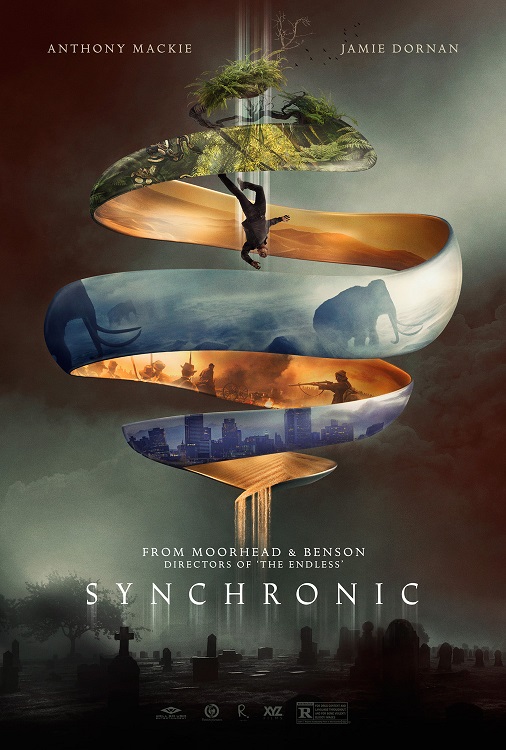
The elegant, grounded, and sly nature of that concept is indicative of the duo’s now-signature storytelling style, and SYNCHRONIC is the latest in their increasingly impressive filmography featuring huge genre ideas in humble, lo-fi indie packages. Given the well-known cast and involvement of some major special effects houses like Buf, SYNCHRONIC might seem on paper to be their first “big-budget” effort, but whatever the cost it retains Benson and Moorhead’s focus on drama and character over flash and scope. The film follows two lifelong friends, Steve (Anthony Mackie) and Dennis (Jamie Dornan) who work as paramedics in New Orleans. Right from the start, Benson and Moorhead present Steve and Dennis’ view of the world as skewed from everyday folks — theirs is a nighttime realm of long stretches of boredom punctuated by disquieting, tense life and death situations, and while it’s not quite BRINGING OUT THE DEAD (1999), it gives the film’s NOLA locations their own unique look and feel. After Steve and Dennis come across numerous incidents of drug abuse where odd, inexplicable injuries (if not outright death) have occurred, Steve discovers the existence of a designer drug, Synchronic, that seems to be the cause. When Dennis and his wife Tara (Katie Aselton) find their teenage daughter Brianna (Ally Ioannides) has gone missing, Steve correctly surmises she’s taken the drug. Thanks to a cancerous tumor on his pineal gland forcing him into chemotherapy, he decides to gamble and take Synchronic, discovering that it combined with his condition allows him to actually travel back in time for seven minutes — albeit with no control over which period he goes to.
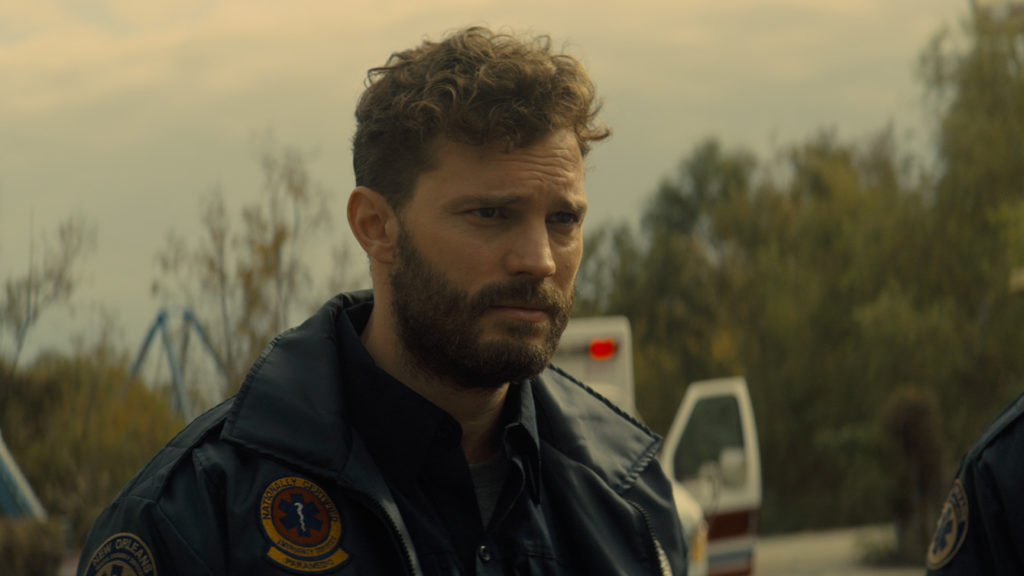
From their debut feature, RESOLUTION (2012), Benson and Moorhead have presented their genre concepts as forces that bleed into reality, changing it in unexpected ways that are pervasive. That aesthetic is fully on display here, with the time travel sequences devoid of bombast and spectacle, focusing more on the tactile. Trees and foliage bleed into indoor spaces, sound shifts from one environment to another, people blip in and out — it’s almost like the space around the time traveler morphs, further bolstering the idea of time travel as drug trip. Benson, as the screenwriter, does an excellent job of laying out the rules of the drug, leading to sequences where Steve experiments with it (literally and figuratively) that allows Mackie to showcase his natural sense of humor and charm. The concept and subtext also gives the directors license to play around with flashbacks and flash forwards, which they do, a conceit that mostly works but does unfortunately lead to some unnecessary confusion and muddled moments. As such, it’s never clear if we’re seeing scenes out of order for artistic reasons or narrative ones, whether this is meant to be what Steve (and possibly Dennis) is experiencing emotionally or more. It’s one of the pitfalls of the directors’ low-key approach, another being the scale of the time travel sequences — while there are certainly some arresting visuals and the design of the scenes set in the past is well detailed, Benson and Moorhead are making a point of never letting the film turn into an adventure, always keeping a focus on the drama instead.
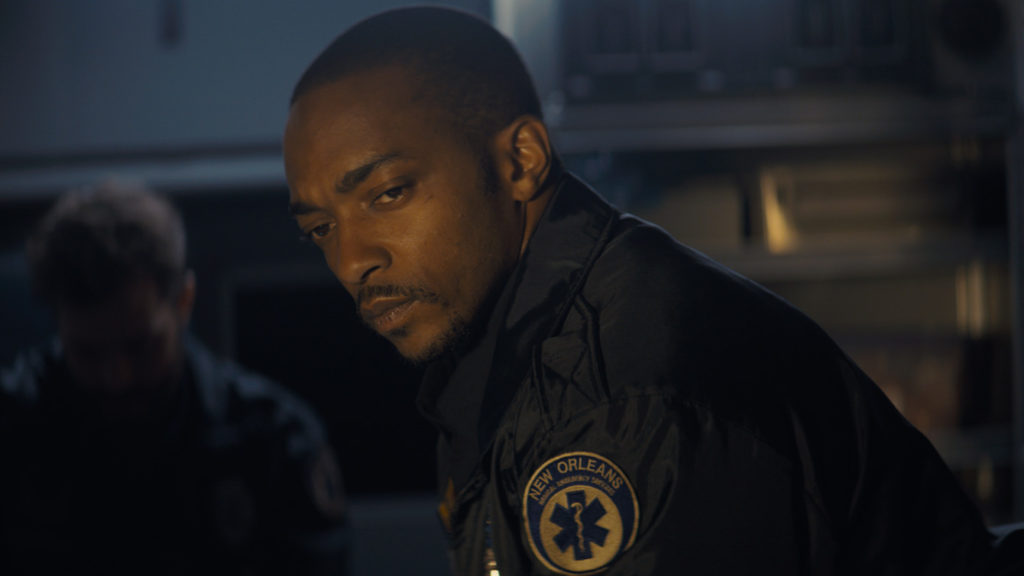
While such quirks may turn off those who hope the film becomes more expansive as it goes along, it allows the story’s concepts and characters to retain the spotlight, especially its two protagonists. Benson and Moorhead, being lifelong filmmaking partners and friends themselves, are clearly fascinated with the intricacies of male friendships. Where RESOLUTION primarily concerned a toxic, co-dependent bond between buddies and THE ENDLESS (2017) explored the knottiness of family ties between brothers, SYNCHRONIC looks at two men who share a vocation but whose lives have veered off in opposite directions, especially in the case of their romantic relationships. Dennis is a man deeply in love with his wife but finds the work of maintaining that relationship a constant struggle, whereas Steve is not only dying but hopelessly single, burned out on the rotating number of partners who are only sexual outlets. The two men articulate their issues in a very hetero, classically masculine way, but they are articulating them to each other with a frankness that’s refreshing and honest. Dornan and Mackie have an easy rapport, and both get to play characters who are compellingly nuanced. The female characters in the film are, by contrast, given sadly less screen time, yet have enough moments that allow them to be realized characters as opposed to mere devices, with Aselton portraying a on-the-edge mother and Ioannides playing a credibly disaffected teen. While Steve gradually emerges as the film’s larger focus, Benson and Moorhead keep the movie about both him and Dennis rather equally, continuing their series of heartfelt two-hander stories.
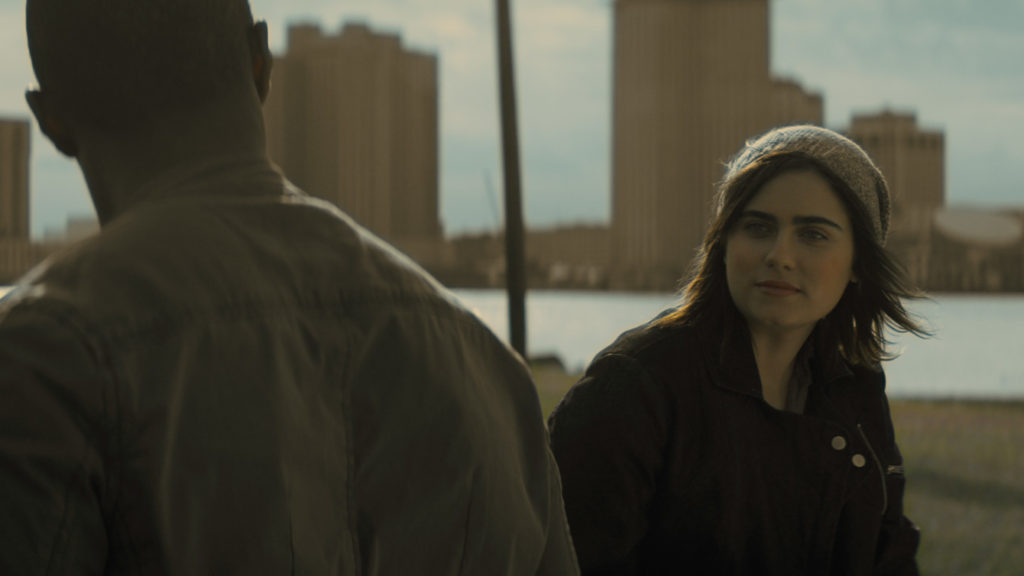
Where SYNCHRONIC really innovates is as a time travel movie, being completely unlike any other in the subgenre. Steve and Dennis are laser-focused on rescuing Brianna, yet the movie never becomes about utilizing time travel to change the future. That’s because the past isn’t treated as a place to visit and manipulate, but rather as a dangerous country that contains any number of threats. Benson and Moorhead don’t shy away from the idea of an African-American man traveling into the more lawlessly racist past, a sharp contrast to other caucasian-centric time travel stories (the duo make sure to work in a pretty sharp dig at BACK TO THE FUTURE, naturally). Even without other people as a threat, the time jumps allowed by Synchronic are dangerous in an elemental way, with forces of nature being hostile almost as if the natural world sensed an interloper. Time travel stories tend to romanticize the past and the future, in part because being allowed to visit them at will subtextually invokes immortality, taking characters out of time as an affront to the realities of mortality. SYNCHRONIC wants to face that mortality head-on, to change the dynamic of the time travel film from wish fulfillment to truthful acceptance of reality, to relegate one of the most compelling notions of science fiction to a dangerous drug. It goes so far as to make its ending blatantly ambiguous, but unlike a Christopher Nolan movie where the question of the ending is the point, here the question of what fate befalls which characters is intended to be fully dismissed. As Steve says in the movie, “the present is a miracle, bruh” — rather than getting high on our constant worry about the future and our obsession with the past, SYNCHRONIC advocates for sober clarity, for living in the now.
Please note: SYNCHRONIC is playing at selected theaters starting October 23rd, and clicking through the WellGo widget above will show you where, but please use caution when considering visiting indoor locations. Stay safe, stay alive. You get to see more movies that way.
Tags: Aaron Moorhead, Ally Ioannides, Anthony Mackie, Bill Oberst Jr., Horror, Jamie Dornan, Jimmy LaValle, Justin Benson, Katie Aselton, Sci-Fi, Well Go USA Entertainment, XYZ Films

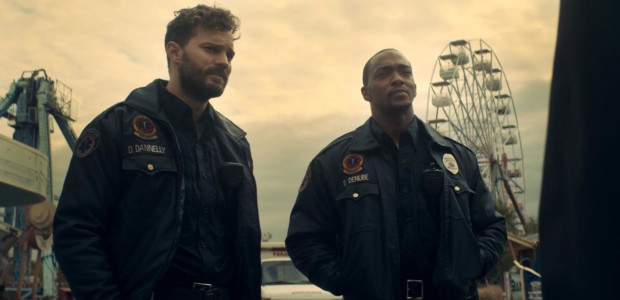

No Comments